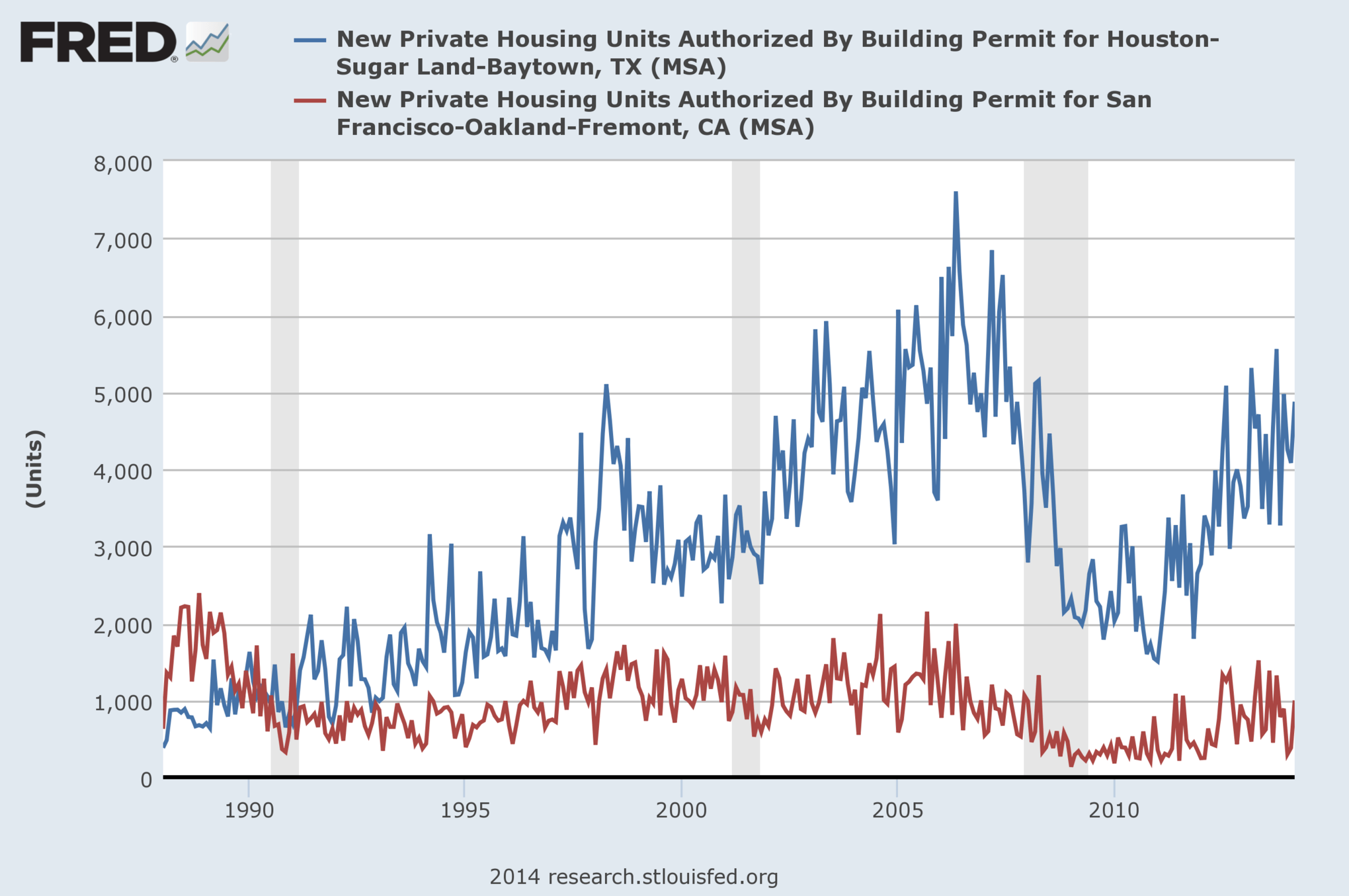Vox, the newly minted technology-powered news source founded by Ezra Klein, recently published a titillating headline:
“NIMBYs are Killing the National Economy”
It is clear that a lack of homebuilding, both nationwide and especially in particular metro regions (we’re looking at you, San Francisco), is directly stifling real estate market and greater economic growth.
Real estate’s role as an economic indicator vs. it’s potential for being an economic driver is a topic we discuss often at first tuesday. But setting this debate aside for the moment, it can be useful to look at how much real estate construction historically contributes to gross domestic product (GDP).
Neil Irwin is quoted in the Vox piece as saying:
“If building activity returned merely to its postwar average proportion of the economy, growth would jump this year to a booming, 1990s-like level of 4 percent, from today’s mediocre 2-plus percent.”
2% may not sound like a lot. But we are talking 2% of $16 trillion — certainly real estate development has fallen significantly from its historical share of GDP. But why?
In Vox reporter Matt Yglesias’ words:
“The reason residential construction is so depressed nationally is that most of the markets with strong housing demand make it extremely difficult, as a regulatory matter, to add additional housing units.”
Amen, Matt. We’ve been frustrated by the crippling claustrophobia in California for years. This chart from FRED tells a thousand words:
Chart courtesy of Vox
What’s really disconcerting about the limitations on zoning in the most in-demand areas of California is the fact that these laws are ostensibly well within the power to change by the city’s residents. What we have is a long-standing lack of education and political will regarding changing restrictive zoning laws in order to allow the much needed affordable housing supply to flourish.
Unfortunately, the zoning rules that prove so intractable are a fundamental component of the vicious downward spiral we are witnessing in California’s real estate markets. Many complain about a lack of housing supply, as though simply building more will solve the problem. First we need to figure out how to induce builders to build. This means creating more demand (and remember, demand stands on two legs: willingness and ability to buy). With organic demand in place, the risk for builders when creating affordable housing is reduced and they are compelled to action.















